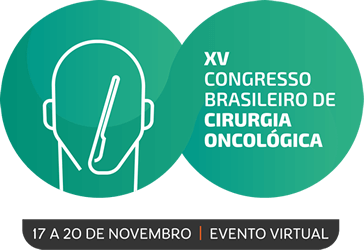Dados do Trabalho
Título
BREAST CANCER SCREENING IN BRAZIL AND ITS CONTROVERSIES
Introdução
Breast cancer is a worldwide problem, with 1.7 million new cases per year. The guidelines recommended for early detection of groups aging 50 to 69 years is assesment every two years. The interventions performed are divided into screening actions such as mammography, which is the only one with proven efficiency; self-examination and clinical examination of the breasts; nuclear magnetic resonance, ultrasonography, thermography and thermosynthesis; in addition to early diagnosis actions: awareness strategies, identification of signs and symptoms and diagnostic confirmation in a single service. Currently, the number of deaths is high, which demonstrates the lack of benefits of health policies implemented for this pathology.
Objetivo
The aim of this study was to investigate breast cancer screening and its main biases in Brazil.
Método
Literature review carried out in the Lilacs and MedLine databases, obtaining the synonyms of the descriptors in MeSH, namely: “Screening”, “Breast Cancer”, “Brazil”. Inclusion criteria were: systematic review articles, meta-analysis and clinical trial, free and complete, published in the last 10 years, carried out in humans, in English. We used the National Cancer Institute (INCA) to obtain epidemiological data.
Resultados
The articles showed that the considerably high proportion of mortality and the incidence of breast cancer indicates a relationship between socioeconomic status and the poor prognosis of the neoplasm. That said, low overall survival rates are related to a high proportion of women diagnosed with advanced disease, associated with less access to treatment and information. The controversy is that mammography is not recommended before the age of 50, as the possible damages outweigh the benefits, due to the possibility of an increase in the number of cancer cases induced by radiation. Screening by other imaging methods or image analysis protocol always seeks to bring benefits over routinely used mammography. In this context, the use of sonographic methods with computer-aided elastography is valid; thermosynthesis; and full-field mammography.
Conclusão
The Ministry of Health's recommendations allows more diagnoses to be made earlier, resulting in an increase in survival. However, there are controversies, such as: methodological limitations, over-diagnosis and absence of changes in relation to the prognosis, requiring further studies on the subject.
Palavras-chave
Screening, Breast Cancer, Controversies.
Área
Oncoginecologia
Autores
ISADORA VELLOSO DE ALMEIDA, ANA CLÁUDIA DIAS SOUSA FIGUEIREDO, LAVÍNIA BARCELLOS ARAÚJO, JÚLIA CARDOZO PIZZAMIGLIO, PAULA DELGADO MACHADO HENRIQUES MOTTA, NAYARA COLI DE PAIVA FRANQUEIRA, ISABELA KARINA SILVA DIAS, VITÓRIA HAGGE DA SILVA SANTOS, PATRÍCIA TAMBASCO FREIRE VICENTE, ALICCE ABREU DA MATA
